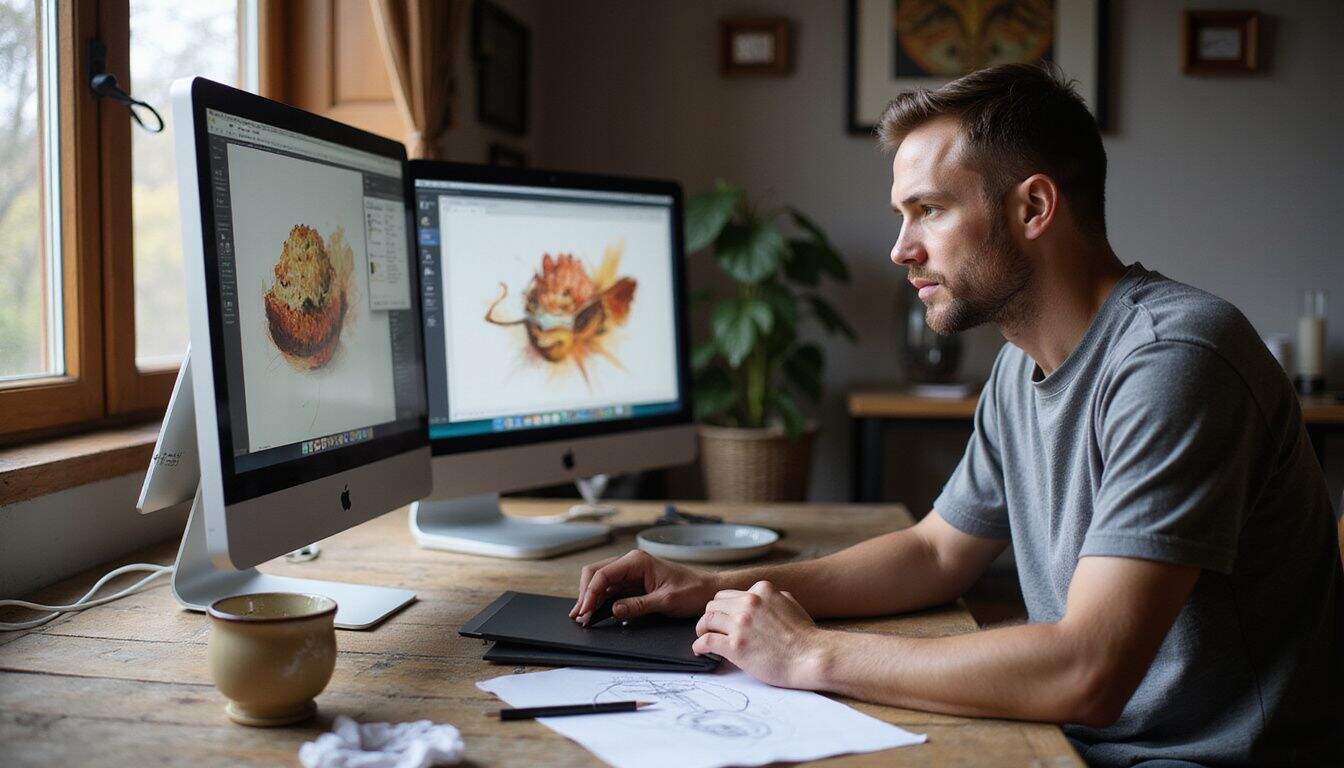Many people wonder “how does AI generate images?” as they see stunning artwork pop up across social media. AI image generation has grown into a $5 billion industry in 2024, with tools like DALL-E 2 and Stable Diffusion leading the charge.
This guide breaks down the core technologies behind AI-generated images, from generative adversarial networks to diffusion models. Get ready to master the magic of AI art creation.
Key Takeaways
AI image generation has grown into a $5 billion industry in 2024, with major platforms like DALL-E 2, Midjourney, and Stable Diffusion using different technologies – GANs (created by Ian Goodfellow in 2014), diffusion models, and neural style transfer to create images from text prompts.
Popular AI image generators vary in cost and features: DALL-E 2 charges $15 for 115 credits, Midjourney offers plans from $10-$120 monthly, and Stable Diffusion costs just $0.0023 per image. These tools create images at resolutions up to 1,024 x 1,024 pixels and can process complex text descriptions into detailed artwork within minutes.
The World Economic Forum’s 2024 Global Risks Report identifies AI-generated misinformation as the biggest near-term global threat, highlighted by incidents like the March 2023 fake Trump arrest photos. In response, organizations like C2PA are developing digital signatures and metadata standards to verify image authenticity.
By 2025, AI image generation will expand beyond static images, with Midjourney adding video creation capabilities, while platforms like Leonardo’s Phoenix offer 150 free images before a $10 monthly fee, and Ideogram provides 25 free daily prompts with improved text rendering abilities.
Table of Contents
What is AI image generation?
 AI image generation creates visual content through artificial neural networks that mimic human brain function. These advanced tools convert text descriptions and sketches into detailed digital art, photos, and illustrations.
AI image generation creates visual content through artificial neural networks that mimic human brain function. These advanced tools convert text descriptions and sketches into detailed digital art, photos, and illustrations.
Text-to-image systems like DALL-E 3 and Midjourney process natural language inputs to produce realistic pictures. The technology analyzes millions of existing images to learn patterns, styles, and visual elements.
Generative AI powers these image creators through mathematical analysis and pattern recognition. The software constructs new visuals pixel by pixel, following user prompts while applying learned artistic rules.
Modern AI generators excel at producing photorealistic scenes, editing existing pictures, and creating unique artwork in numerous styles. They use machine learning to comprehend context and generate appropriate visual details. For instance, an AI porn generator can positively empower users by offering safe, customizable, and consensual ways to explore creative expression in adult-themed digital art, expanding the boundaries of personalized content creation.
These tools have changed creative workflows across marketing, entertainment, and medical imaging fields.
Key technologies behind AI image generation
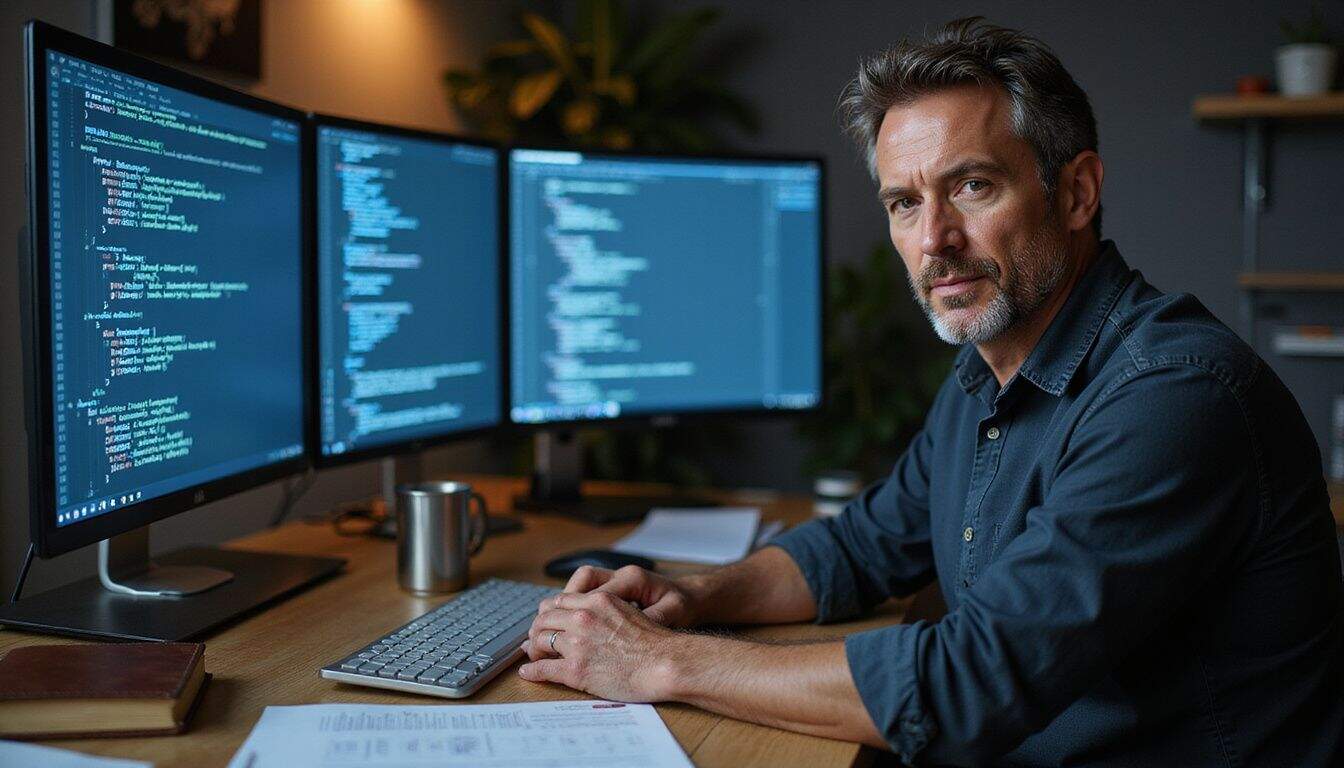
AI image generation relies on three core technologies that shape digital art creation. These technologies work together to process data, learn patterns, and create new images from scratch or existing ones.
What are Generative Adversarial Networks (GANs)?
 Generative Adversarial Networks stand as a breakthrough in artificial intelligence image creation. Ian Goodfellow and his team at the University of Montreal introduced GANs in 2014.
Generative Adversarial Networks stand as a breakthrough in artificial intelligence image creation. Ian Goodfellow and his team at the University of Montreal introduced GANs in 2014.
These neural networks work through a unique competitive setup between two main parts. The generator creates new images, while the discriminator checks if they look real. This process mirrors two artists: one who paints pictures and another who spots fakes.
The system learns and improves through constant feedback loops until both networks reach a balance point.
GANs excel at making realistic faces and can change existing photos in amazing ways. The generator starts with random noise and turns it into clear pictures based on its training. The discriminator gets better at catching fake images by studying real ones.
Several types of GANs serve different purposes, such as Deep Convolutional GANs for sharper images and Super-resolution GANs for improving image quality. These networks help create training data for machine learning projects and support various creative tasks.
The technology keeps getting better at handling complex scenes with multiple objects.
How do diffusion models work?
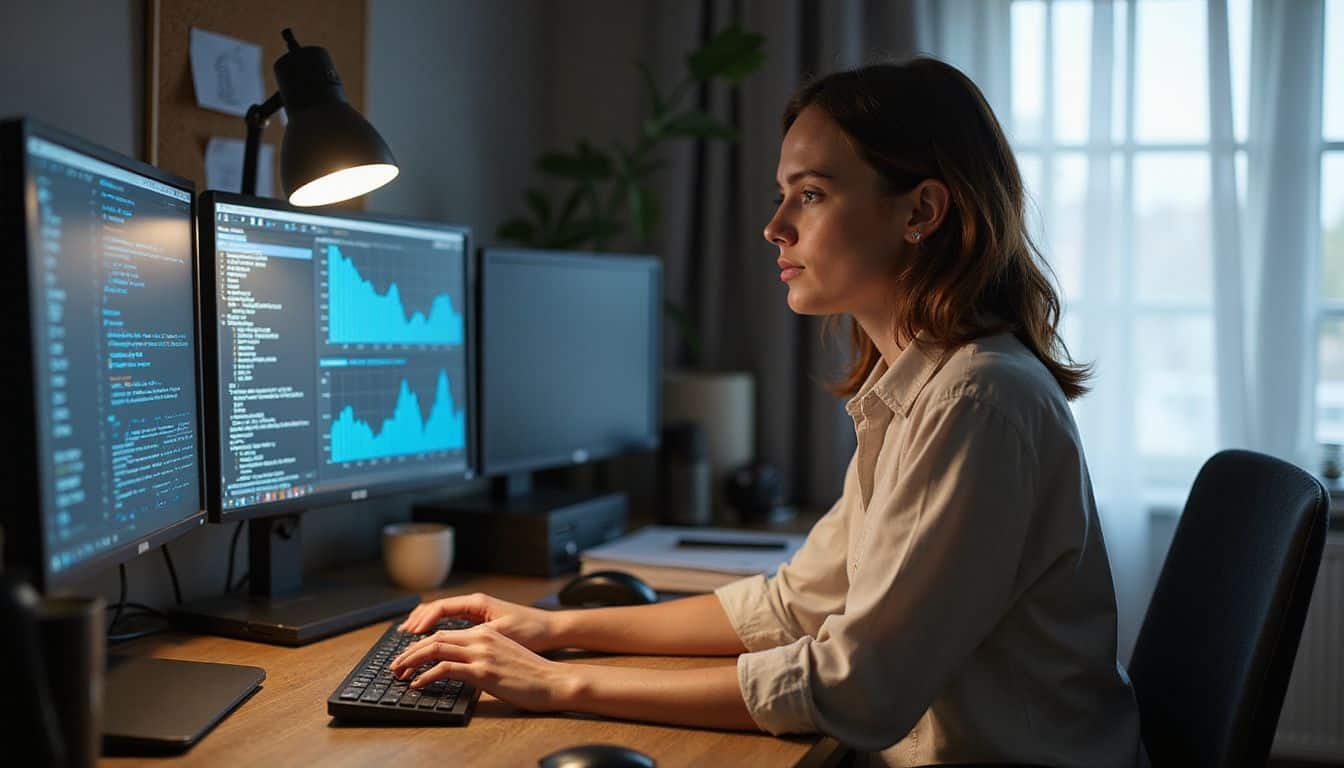
Diffusion models create images through a two-step process that starts with random noise. The forward phase adds Gaussian noise to data points, while the reverse phase uses neural networks to remove this noise step by step.
These models excel at producing high-quality images by applying Stochastic Differential Equations and Score-Based Generative techniques during the denoising process.
AI systems like DALL-E 2 and Stable Diffusion use diffusion models to turn text into stunning visuals. The process demands heavy computing power but delivers better image quality than older GAN methods.
Modern diffusion models connect text prompts directly to visual outputs rather than just mixing existing examples. The neural networks learn to spot and fix noise patterns until a clear, detailed image emerges from the initial random data.
What is neural style transfer (NST)?
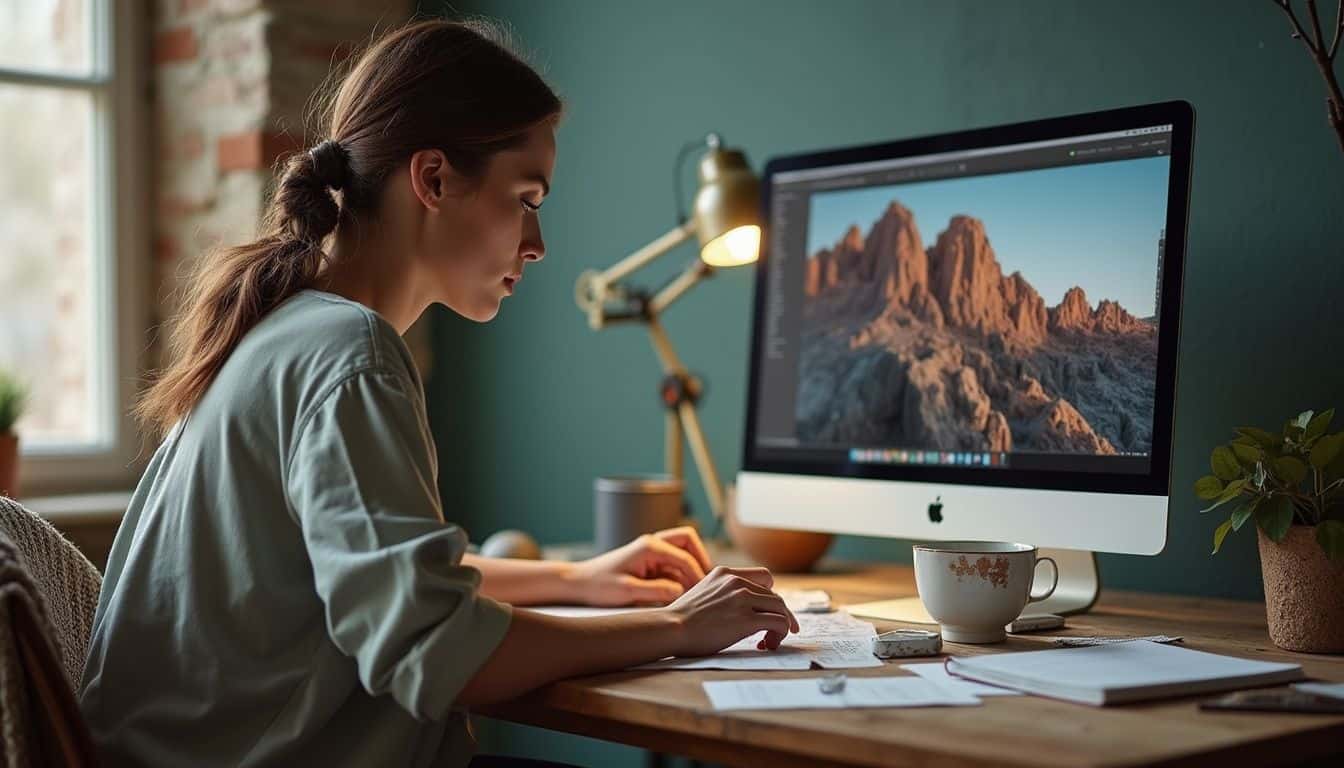
Moving beyond diffusion models, Neural Style Transfer stands as another powerful technique in AI image generation. NST works through deep learning to mix the content from one image with the artistic style of another image.
AI in photo editing uses this method to create unique artistic effects.
The process relies on Convolutional Neural Networks to extract features and uses two key components: content loss and style loss. The system measures content loss by comparing feature differences between the source and created images.
Style loss uses a special math tool called the Gram matrix to check style differences. The final image comes from an optimization process that balances both losses through a formula: L = ?Lc + ?Ls, where ? and ? control the mix of content and style.
How AI turns text into images
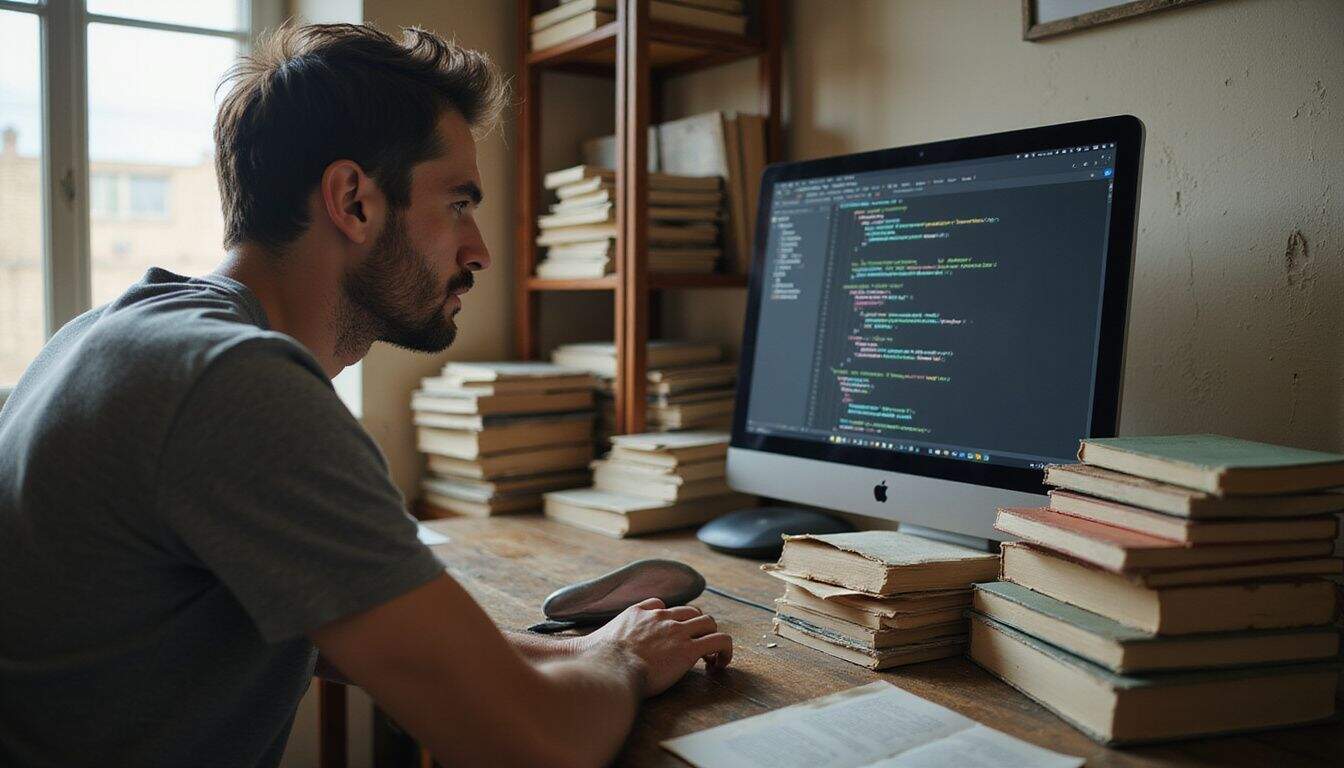
AI turns text into images through complex systems that process written descriptions and match them with visual elements from massive training datasets – stay tuned as we break down this fascinating process in detail.
What role does natural language processing (NLP) play?
 Natural Language Processing serves as the bridge between human text commands and AI image creation. NLP breaks down text prompts into numerical values that computers can process through computational linguistics and machine learning.
Natural Language Processing serves as the bridge between human text commands and AI image creation. NLP breaks down text prompts into numerical values that computers can process through computational linguistics and machine learning.
Smart assistants and chatbots use these same NLP principles to understand user requests. The system analyzes syntax, sentiment, and semantics to grasp the full meaning of image descriptions.
NLP is the foundation that allows machines to interpret and execute complex artistic visions through text – Anima Anandkumar, AI Researcher
Text-to-image models like CLIP link written descriptions with visual elements for accurate image generation. The process starts with basic prompt understanding, such as “a red apple on a tree,” and extends to complex artistic directions.
NLP algorithms examine each word’s meaning, context, and relationships to create precise visual outputs. This technology powers popular tools like DALL-E 2 and Stable Diffusion, making them respond accurately to detailed text instructions.
How are models trained with image-text datasets?
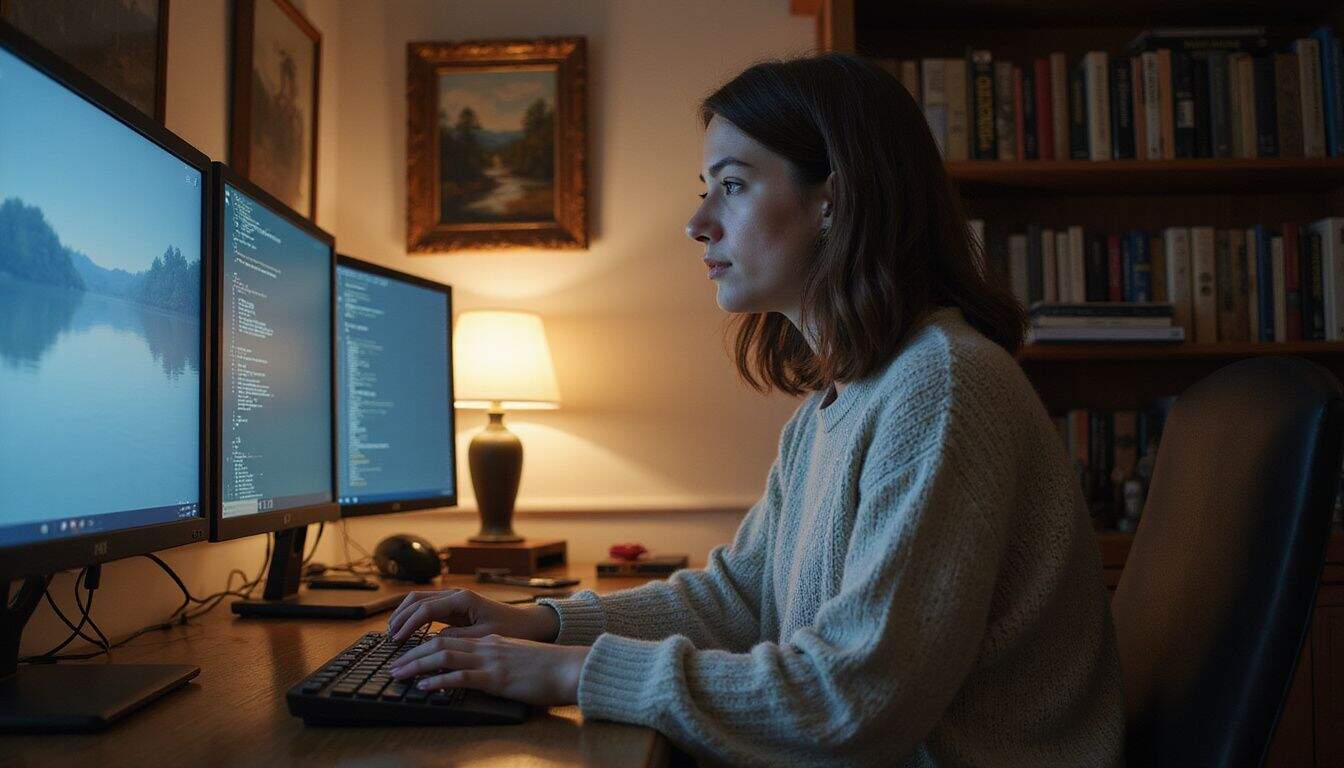
AI image generators learn from massive datasets that pair images with text descriptions. These datasets contain millions of image-caption combinations that teach the models to understand visual patterns and features.
The training process uses special loss metrics to check and improve output quality. Models like CLIP turn text prompts into number-based data that helps create new images.
Training neural networks demands huge computing power and time. The models must process complex image-text relationships while maintaining high accuracy. Most datasets include common objects and scenes, which limits the AI’s ability to create unusual or rare combinations.
Legal questions also arise because many training images come with copyright protection.
Popular AI image generators
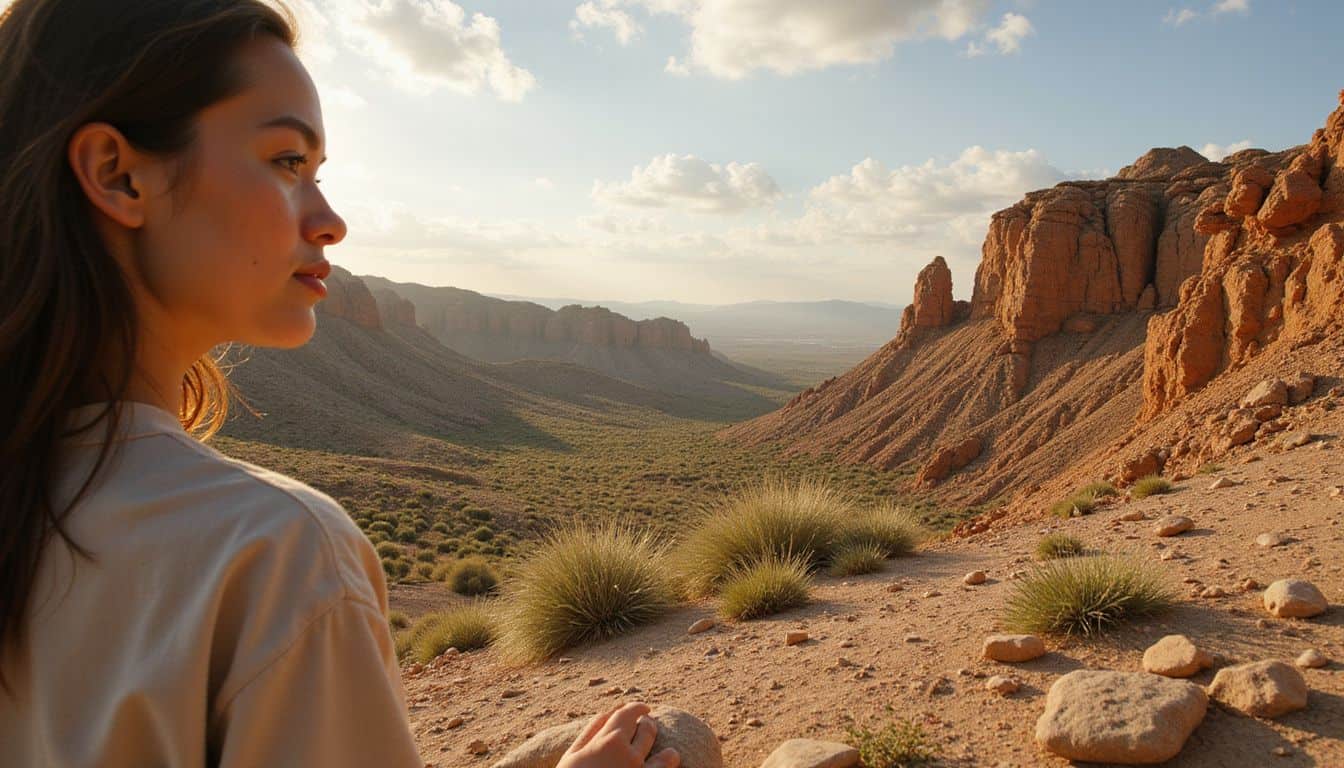
Advanced AI image generators such as DALL-E 2, Midjourney, and Stable Diffusion produce impressive visuals based on text descriptions. We’ll examine how each platform distinguishes itself in the market.
What is DALL-E 2?
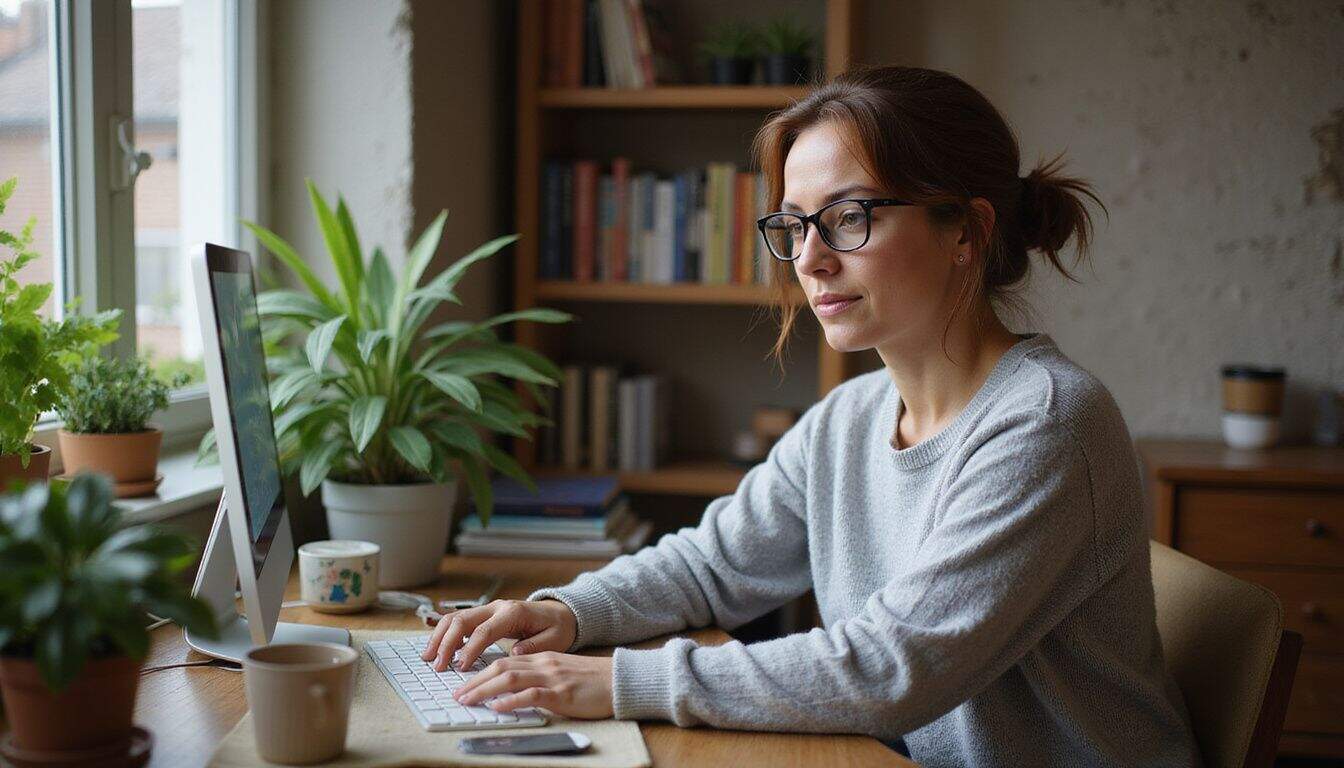
DALL-E 2 stands as OpenAI’s powerful AI image generator, launched in April 2022. This generative AI system creates high-quality images from text descriptions using a mix of diffusion models, CLIP, and GPT-3 technology.
Users can produce images at 4x the resolution compared to the original DALL-E, making it perfect for creating detailed artwork and designs.
DALL-E 2 represents a significant leap in AI-generated art, combining natural language understanding with visual creativity.
The platform runs on a credit system where $15 gets you 115 credits for image creation or edits. ChatGPT’s free tier offers basic access to DALL-E 2, while premium features need a subscription.
The system maintains strict content filters to block harmful material generation, ensuring safe and responsible AI art creation. I’ve personally used DALL-E 2 through ChatGPT to create various artistic concepts, and its prompt refinement feature helps fine-tune images until they match my vision.
How does Midjourney generate images?

Midjourney creates impressive AI art through its Discord-based platform in San Francisco. The system uses a V5 model that turns text prompts into 1,024 x 1,024 pixel images at 72ppi resolution.
Users can choose from different subscription tiers from Basic at $10 monthly to Mega at $120 monthly, each with different features and generation speeds.
The AI image generator is particularly good at combining images and working with custom photo uploads for personalized artwork creation. Users control their output using specific commands to adjust aspect ratios and image quality settings.
The platform offers upscaling options and allows multiple variations from a single prompt, giving artists more creative control. The newest version, Midjourney 6, aims to expand possibilities with higher resolution options and better image quality for users who require professional-grade outputs.
What makes Stable Diffusion popular?
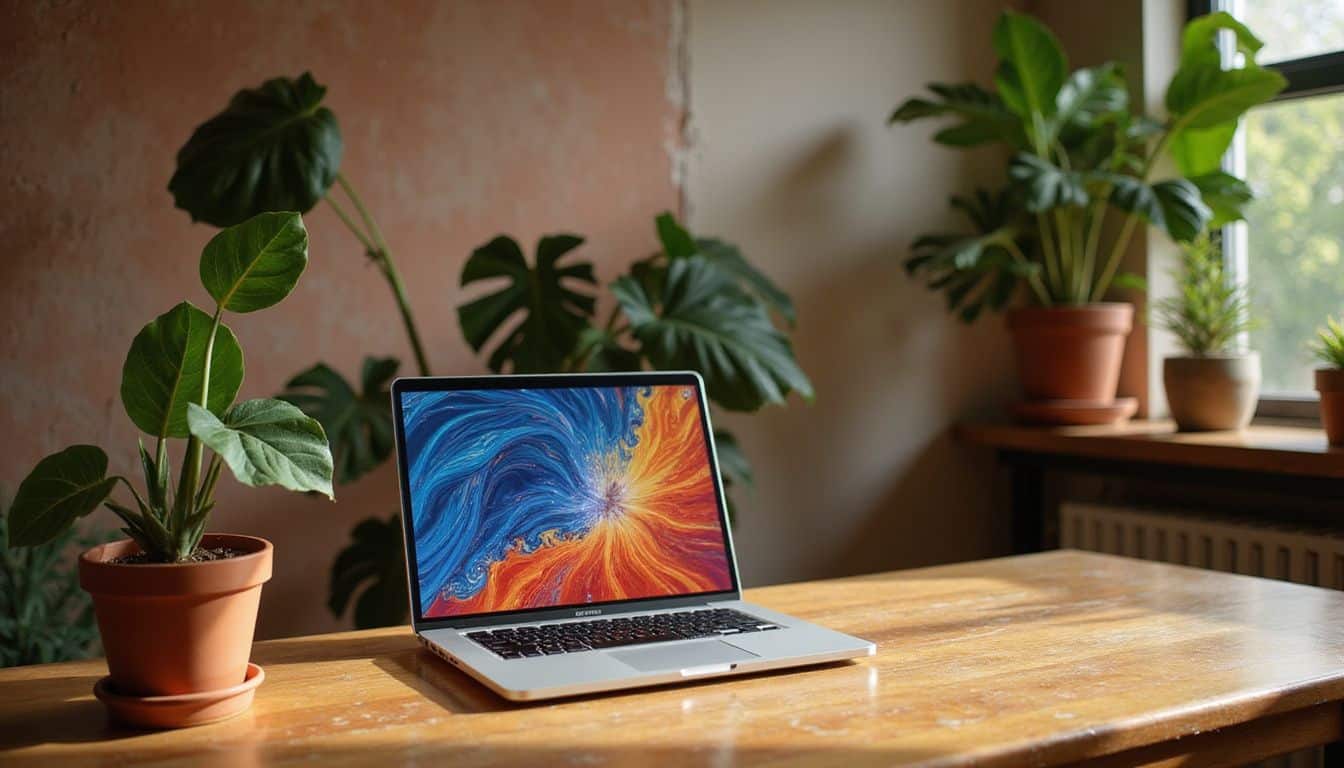
Stable Diffusion stands out as a cost-effective AI image generator, charging only $0.0023 per image. The platform runs smoothly on regular graphics cards, making it accessible to many users.
Its open-source nature allows tech enthusiasts to modify and improve the system. The platform creates detailed, colorful images in under two minutes, scoring 7.0 out of 10 for creative output.
The tool uses advanced Latent Diffusion Models to process images quickly and efficiently. Users can access comprehensive editing features through a $10 monthly subscription that includes privacy protection.
Stability AI partnered with EleutherAI and LAION in 2022 to launch this platform, which now supports both CLIP ViT-L/14 and OpenClip technologies. Free trials remain available to new users based on server capacity.
Applications of AI-generated images

AI-generated images have sparked a revolution across multiple industries, from movie special effects to medical diagnosis. Companies now use AI art tools to create stunning marketing visuals, while doctors rely on AI systems to analyze X-rays and detect diseases with greater accuracy.
How is AI used in entertainment and media?

Major entertainment giants now rely on AI to reshape content creation. Netflix, Disney, and Ubisoft use machine learning algorithms to speed up production and enhance viewer experiences.
Disney applies neural networks for character animation and visual effects, cutting down production time significantly. These companies also use AI-driven recommendation systems to match content with viewer preferences through deep learning analysis.
Creative tasks in entertainment have seen a major shift through artificial intelligence adoption. AI tools now assist in scriptwriting by studying existing content patterns. The technology handles video editing and post-production tasks automatically.
In 2022, Waymark AI proved AI’s creative potential with their film “The Frost.” Marketing teams track audience reactions through sentiment analysis to fine-tune their strategies. The rise of AI in advertising and social media platforms brings up the next important topic about its impact on marketing practices.
How does AI impact marketing and advertising?

AI transforms marketing by adding $2.6-$4.4 trillion yearly to the global economy through intelligent automation and personalization. Marketing teams now use AI to create instant, custom visuals for their campaigns while automating content creation at scale.
Large language models help segment customers better and predict campaign success rates with statistical analysis. I’ve seen firsthand how AI-driven marketing tools reduced our campaign setup time by 70% and improved engagement rates through precise audience targeting.
The technology enables real-time campaign adjustments and creates highly personalized customer experiences through machine learning algorithms. AI manages complex tasks like smart segmentation, journey orchestration, and content localization across different channels.
Privacy remains crucial in this space, especially for cookie management and data tracking. AI shows promising results in analyzing radiographs and CT scans with remarkable accuracy for medical imaging applications.
What are the uses in medical imaging?
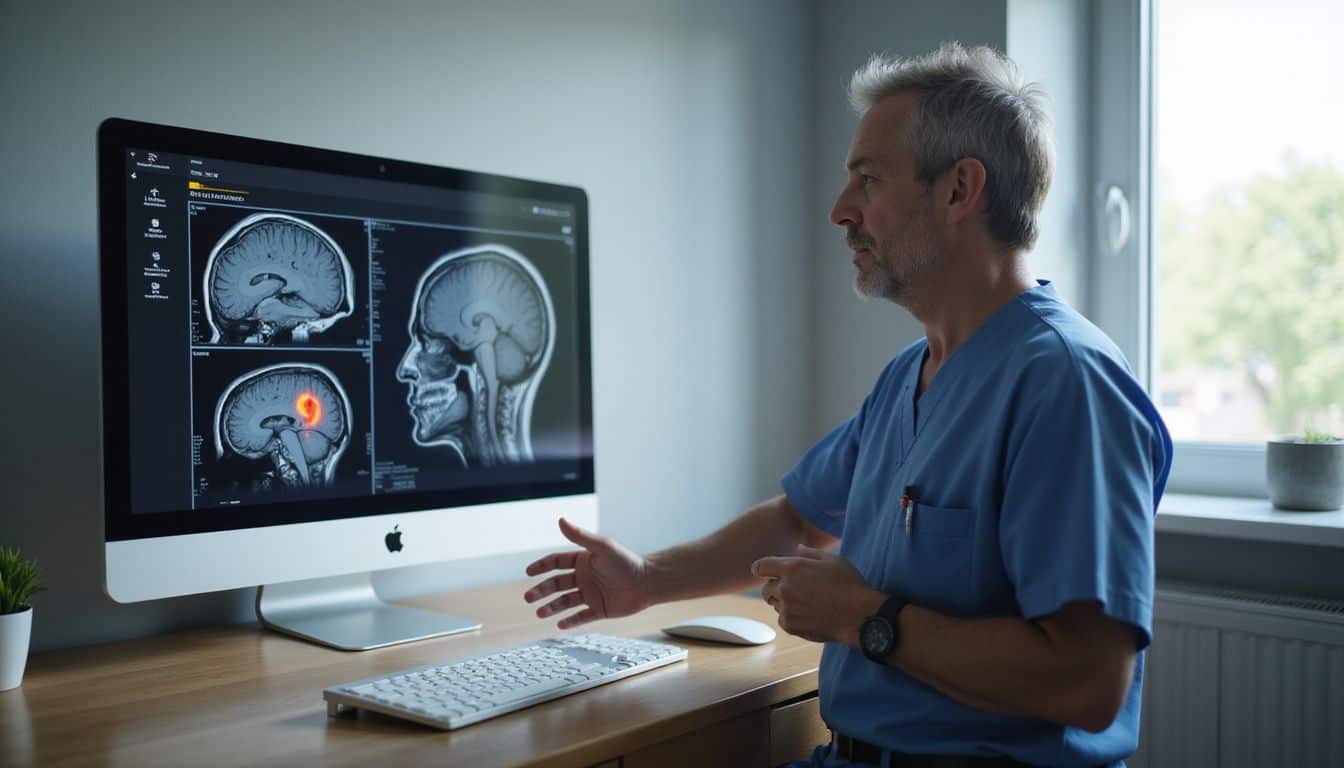
Medical imaging has gained massive speed and precision through artificial intelligence. Doctors now use AI systems to read X-rays, CT scans, and MRIs faster than ever before. These tools excel at spotting brain tumors and setting the right radiation doses for patient safety.
Medical teams also rely on AI to measure skeletal structures from radiographs, making orthopedic work more efficient.
AI brings major improvements to hospital workflows by helping doctors make better choices. The technology spots fractures and trauma with high accuracy, leading to faster treatment for patients.
Radiologists use AI to find chest problems more reliably than before. Smart systems can even figure out bone age from children’s X-rays automatically, saving precious time in pediatric care.
These advances make medical imaging more reliable while keeping patients safer.
Challenges and limitations

AI image generation faces major hurdles in creating authentic-looking images that match human standards. These issues range from technical limits in image quality to ethical concerns about fake content and stolen art styles, which affect both creators and users of AI systems.
What are the quality and authenticity issues?
AI-generated images have several quality issues that frustrate users. Current generators like DALL-E and Midjourney have difficulties with human anatomy, often creating hands with extra fingers or unnatural poses.
The images display noticeable flaws such as asymmetrical earrings, distorted teeth, and unrealistic textures. These technical limitations result from the massive training data requirements and high computational needs of generative models.
Neural networks still lack the precision to capture subtle details that human artists naturally include in their work.
The authenticity of machine-created art raises serious concerns about artistic value and originality. Many critics view AI art as lacking emotional depth and genuine creative expression compared to human-made pieces.
The Lensa app controversy highlighted representation bias issues, particularly affecting underrepresented groups in the training data. This bias creates a ripple effect where real media gets dismissed as fake, a phenomenon known as the “liar’s dividend.” Face recognition systems and deep learning models continue to produce content that falls short of human artistic standards despite technological advances.
How do copyright and intellectual property concerns affect AI images?
Copyright issues affected AI image generation tools in 2023. Three artists sued Stability AI, Midjourney, and DeviantArt for using copyrighted images without permission in their training datasets.
The U.S. Copyright Office released a detailed report on legal policies for AI-generated works. Many training images used by neural networks come from copyrighted sources, creating ownership debates.
Jason Allen’s AI artwork win at the Colorado State Fair sparked discussions about art competition rules.
Legal battles over AI-generated images continue to intensify. The images often resemble copyrighted works, making it difficult to prove original creation. Content restrictions exist in tools like DALL-E 2 to prevent harmful material generation.
The Coalition for Content Provenance and Authenticity develops new standards to verify image authenticity through metadata and digital signatures. These challenges prompt an examination of the risks of deepfakes and false information in the next section.
What risks do deepfakes and misinformation pose?
Deepfakes pose major risks to society through widespread misinformation. The World Economic Forum’s 2024 Global Risks Report ranks misinformation as the biggest near-term global threat.
Criminals now use AI-generated images and deepfake videos to steal data and commit fraud. The March 2023 incident of fake Donald Trump arrest photos showed how fast false content can spread online.
These AI generated visuals make it harder for people to trust real media content.
AI image generation tools have become too easy to access and use for harmful purposes. Bad actors target high-profile individuals and company executives through deepfake attacks. The technology advances so quickly that detecting fake content gets more difficult each day.
The “liar’s dividend” creates extra problems because people can now claim real footage is fake. Organizations must train their staff and use better authentication systems to fight these threats.
The future of AI safety depends on how we handle these emerging challenges in neural networks and machine learning systems.
AI image generation may evolve significantly by 2025.
Future of AI image generation
 AI image generation stands at the start of major changes through 2025 and beyond. Ming-Ching Chang calls this AI’s “third wave,” where machines will create more fair and reliable images for social good.
AI image generation stands at the start of major changes through 2025 and beyond. Ming-Ching Chang calls this AI’s “third wave,” where machines will create more fair and reliable images for social good.
The Photon model leads this progress with its strong ability to make custom images from detailed text prompts. AI will soon match human creativity in making art, photos, and designs across many fields.
Expert Anima Anandkumar points out that fixing bias remains a key challenge for future AI systems. The C2PA group tackles this by adding special data and digital signatures to prove if images are real or AI-made.
Large language models and neural networks will get better at understanding what people want and creating exact matches for their ideas. The next 50 years will focus on making AI image tools that people can trust, with strong privacy and security built in from the start.
How Will AI Image Generation Change in 2025?

AI technology advances significantly with major updates in 2025’s image generation tools. Gemini now includes advanced image editing features, allowing users to modify backgrounds in both AI-created and regular photos.
ChatGPT excels at producing highly realistic photos and complex scenes that closely resemble real life. Midjourney expands its capabilities by creating short videos, signifying a significant progression from static image generation.
Free options provide users with increased creative capabilities in 2025. Leonardo’s Phoenix model allows users to create 150 free images before implementing a $10 monthly fee. Ideogram offers 25 free prompts daily and excels at clear text rendering in images.
Adobe Firefly utilizes only licensed images for training, making it a preferred choice for ethically-conscious users. NightCafe fosters a supportive community where both novice and experienced creators can learn from one another.
The neural networks powering these tools continue to improve through direct user feedback and regular updates to the generative models.
People Also Ask
What is AI image generation and how does it work?
AI image generation uses artificial intelligence, neural networks, and deep learning to create visuals from text descriptions. The process relies on training data and generative models like diffusion models and GANs (Generative Adversarial Networks) to produce images.
Which technologies power modern AI image generators?
Modern AI image generators use several key technologies: large language models (LLMs), contrastive language-image pre-training, and auto-encoders. Companies like Midjourney, Inc. combine these with prompt engineering to create artistic styles and realistic visuals.
Can AI generate images for specific industries?
Yes, AI can create specialized images for industries like healthcare, producing x-ray images and pathological scans. Marketers also use AI-generated visuals for marketing campaigns, profile pictures, and creative content.
How accurate are AI-generated images?
The accuracy of AI-generated visuals depends on the training data and machine learning models used. Researchers like Joy Buolamwini and Hany Farid study these systems to ensure they work fairly and accurately across different applications.
What role does prompt engineering play in AI image generation?
Prompt engineering helps users guide the creative process by providing specific instructions to AI systems. This technique allows marketers and artists to create targeted visuals that match their intended audience and marketing strategies.
How are AI-generated images stored and delivered?
AI-generated artwork is typically stored in databases and delivered through content delivery networks (CDNs). Companies use load balancing and serverless technologies to ensure efficient distribution of these images to users.
References
https://ai-pro.org/learn-ai/articles/the-ultimate-guide-to-ai-art-and-ai-image-generators (2025-04-30)
https://aws.amazon.com/what-is/gan/
https://www.superannotate.com/blog/diffusion-models (2025-02-28)
https://www.numberanalytics.com/blog/ultimate-guide-neural-style-transfer-drawing (2025-06-16)
https://onlinedegrees.sandiego.edu/natural-language-processing-overview/
https://www.altexsoft.com/blog/ai-image-generation/ (2023-07-10)
https://www.shopify.com/blog/dall-e
https://www.elegantthemes.com/blog/design/midjourney-ai-art
https://www.cnet.com/tech/services-and-software/best-ai-image-generators/
https://www.miquido.com/blog/how-is-ai-used-in-entertainment/
https://useinsider.com/generative-ai-in-marketing/
https://digitalmarketinginstitute.com/blog/ai-in-digital-marketing-the-ultimate-guide (2025-04-14)
https://hatchworks.com/blog/gen-ai/generative-ai/
https://www.rand.org/pubs/perspectives/PEA3243-1.html (2024-11-20)
https://www.tomsguide.com/best-picks/best-ai-image-generators
